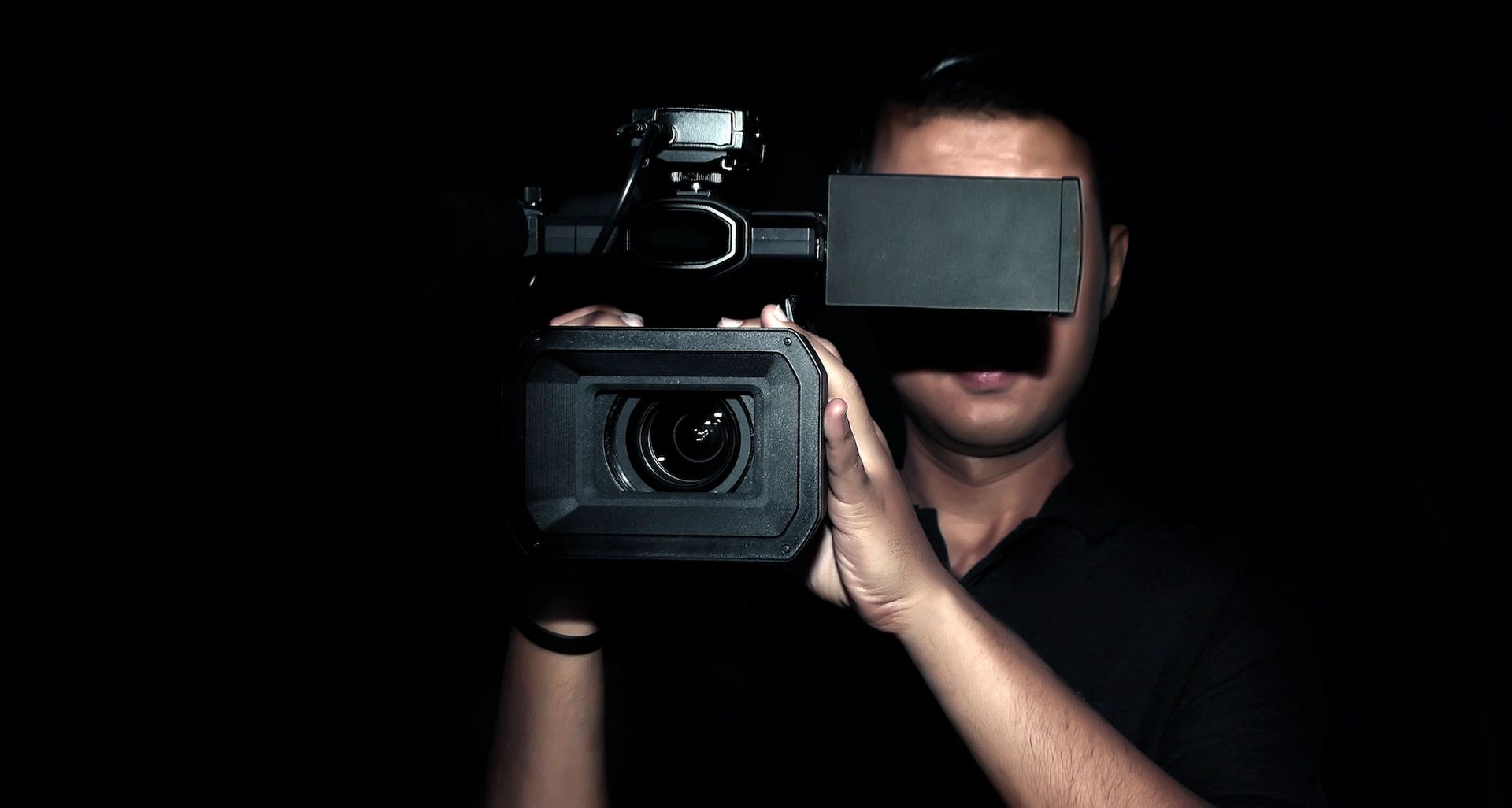Let’s review the best external camera screens out there. An external monitor is a helpful tool for content creators and vloggers who frequently need to video themselves.
What is an external monitor for camera?
An external camera screen enables you to view a live preview with improved fidelity and color calibration whether or not your camera includes a front-facing (articulating) LCD.
When using mirrorless cameras with focus peaking, a big field monitor is very helpful for ensuring that everything is in sharp focus.
The best external monitors even enable you to record directly to a built-in SSD or memory card if your camera provides a clean HDMI feed, maximizing image quality from both mirrorless cameras and DSLRs. Frame markers, LUT previewing, aspect ratio guides, highlight/shadow peaking, zooming in, HDR, false color, vectorscope, RGB parade, and waveforms are further professional features.
Do external cameras need a monitor?
Mirrorless cameras are more portable than DSLRs, which is one of the factors contributing to their popularity. In my experience, once you take into account professional lenses and all the other accessories that may be linked to a camera, this is not always the case, but that is a subject for another conversation. We’ll only talk about one of the things that you might want to put on a camera today. the outside display.
Nowadays, external monitors are rarely used for taking still photos. Quickly switching between horizontal and vertical positions, cramming my flash trigger into my hotshoe, and somehow duct-taping my monitor to the side while hand-holding a camera with a monitor connected. This is not how I like to spend my time. Thus, even while I’m sure I could think of a compelling reason to use an external display for still images, what I’m actually talking about is doing so for video.
You can also learn how to rotoscope an isolated subject in Photoshop after reviewing the devices below!
Best external camera screens
Examining the top models of the year will help you improve and simplify your filmmaking experience.
Atomos Ninja V
Pros
- Excellent image quality
- Long-lasting design
- Professional monitoring features
- Support for ProRes and ProRes Raw formats
Cons
- Needs additional equipment to function
- An audio recording may be disturbed by a cooling fan.
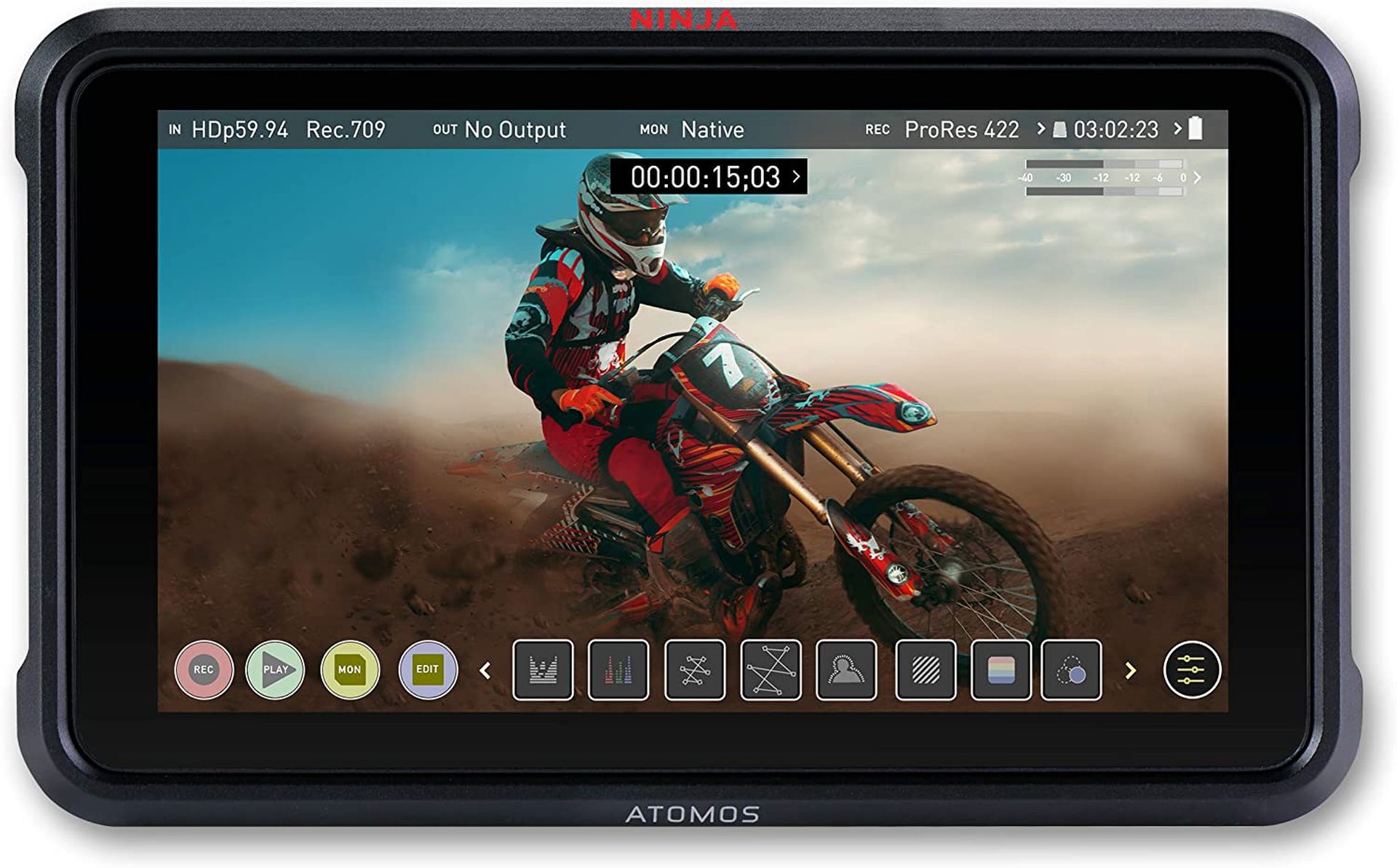
The industry-leading Atomos Ninja V external monitor and recorder gives your camera’s maximum bit rate and depth, ensuring the highest image quality, as well as the advantage of recording in ProRes Raw format.
It has a 5-inch, 16:9 touch screen with 427 ppi and a brightness of 1000 nits, making it easy to use outside while still keeping a clear, crisp image.
Users have a ton of options for customizing the appearance and feel of the film they shoot, including luma waveform, vectorscope, and focus peaking.
The Ninja V’s screen can display over 10 stops of dynamic range, and it can record ProRes 4:2:2 raw video. You can use the Ninja V to capture 4K footage at a variety of frame rates.
The Atomos Ninja V external display offers nearly endless codec possibilities, including Avid DNx and H. 265 in addition to ProRes, and outstanding log formats including Arri Log, Clog, and Red Logfilm.
The Atomos Ninja V external monitor and recorder earns our highest rating as a professional-level device that combines a wide range of inputs and outputs with excellent visual quality. Atomos Ninja V is one of the best external camera screens you can find out there.
Blackmagic Design Video Assist 3G
Pros
- Nice quality 7-inch touch screen
- all popular SD/HD video formats are supported
- ProRes compatible
- An economical alternative to the 12G versions
Cons
- The image could be brighter.
- Quite pricey
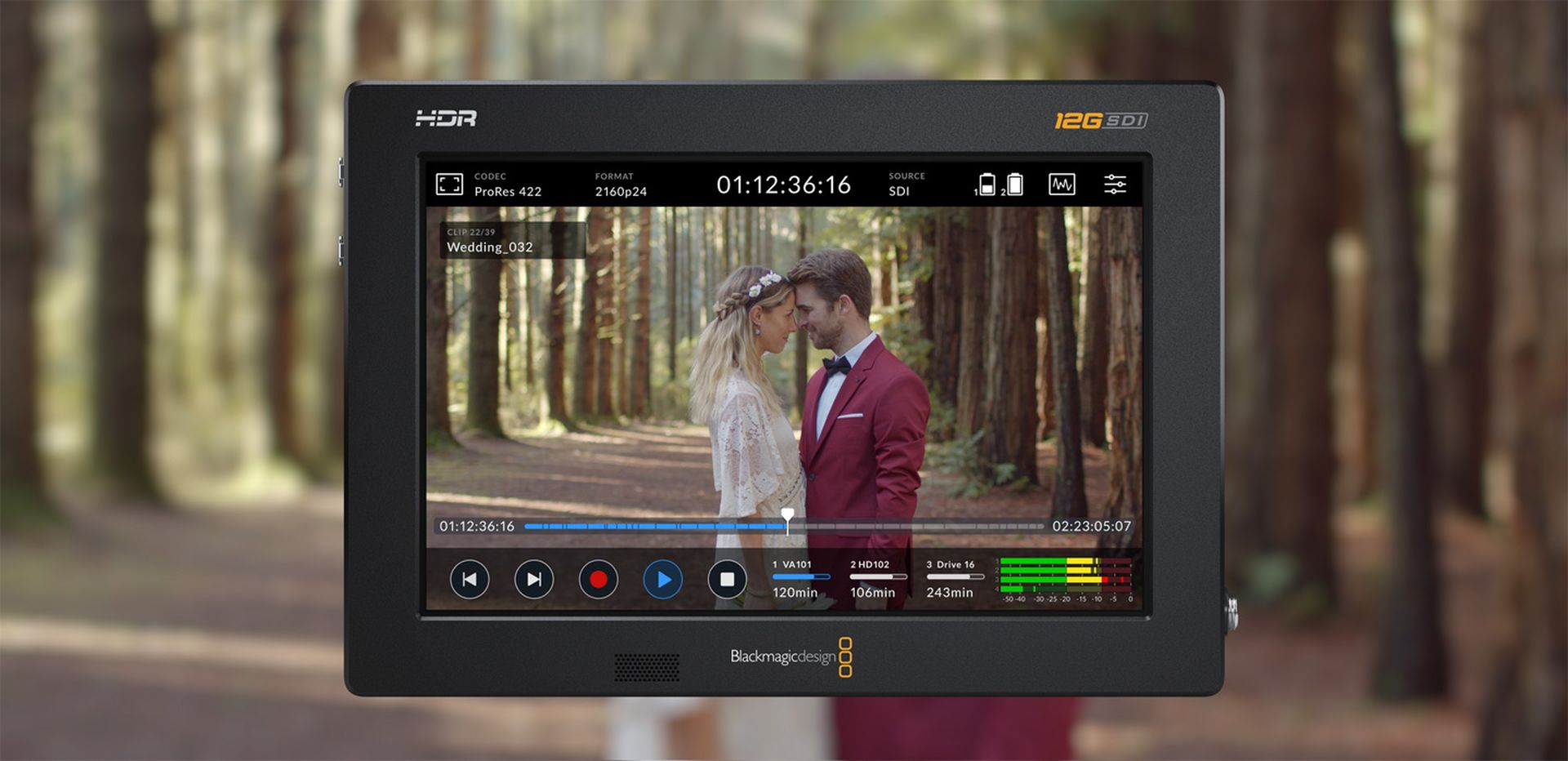
Blackmagic has made a name for itself as a producer of some of the greatest semi-pro, consumer-friendly video cameras on the market, and the Design Video Assist 3G, their camera field monitor, reflects their dedication to excellence.
It features a spacious 7-inch screen with a 1920 x 1200 resolution, a variety of video formats, and the ability for users to record in Ultra HD using dual high-speed recorders.
It has a 3G-SDI and HDMI input, two 3-pin mini-XLR inputs with 48V phantom power support for high-quality audio recording, and two included SD card slots, which allow you to switch out cards on the fly and enable continuous recording.
The touch screen has a good array of tools for adjusting and enhancing video, including false color, frame guides, focus peaking and assist, and zebra. Additional LUTs help in further enhancing the desired color of the image.
Similar to the Atomos Ninja V, the Blackmagic Design Video Assist 3G offers recording in 10-bit Apple ProRes and Avid DNx, ensuring that you have the best quality to work with if you have a high-end camera.
One of the best external camera screens available is the Blackmagic Design Video Assist 3G thanks to its larger screen, numerous customization options, and support for multiple formats.
Atomos Shinobi
Pros
- A fantastic, portable, and simple-to-use monitor
- Brightness at a high level
- Supports waveform and LUTs
- Offers features of Atomos Ninja V at a reasonable price
Cons
- Not suitable for use as a portable recorder
- For high-end professional cameras only.

Returning to Atomos for their more affordable and condensed version of the Ninja V, the Atomos Shinobi maintains the overall high production standards of its larger sibling while giving up some professional features and recording capabilities.
In addition to the numerous monitoring tools you can use to help you fine-tune your image, including LUT and HDR support, which is uncommon to find on a monitor in this price range, many of the fantastic features you get with the Ninja V are present and accurate on the Shinobi.
Even better, the Analysis function, a brand-new tool not included on the Ninja V, lets you see what you’re shooting while seeing the waveform, histogram, and vectorscope without having them obscure the image.
The responsive and intuitive menu system, which is created to allow you access to the majority of functions in no more than two taps of the touch screen, makes it simple to use all of these capabilities.
The Atomos Shinobi is a top-notch external camera screen that is perfect for vloggers, filmmakers, and other creatives if the Atomos Ninja V appeals to you but you want to save money and don’t mind giving up the ability to record.
Feelworld FW568
Pros
- Fantastic value for the money
- Fery user-friendly
- Input & Loop-Through Output for HDMI 4K
- Has a parasol included for shooting in direct sunshine.
Cons
- Construction of the units is somewhat fragile.
- A touch screen is not
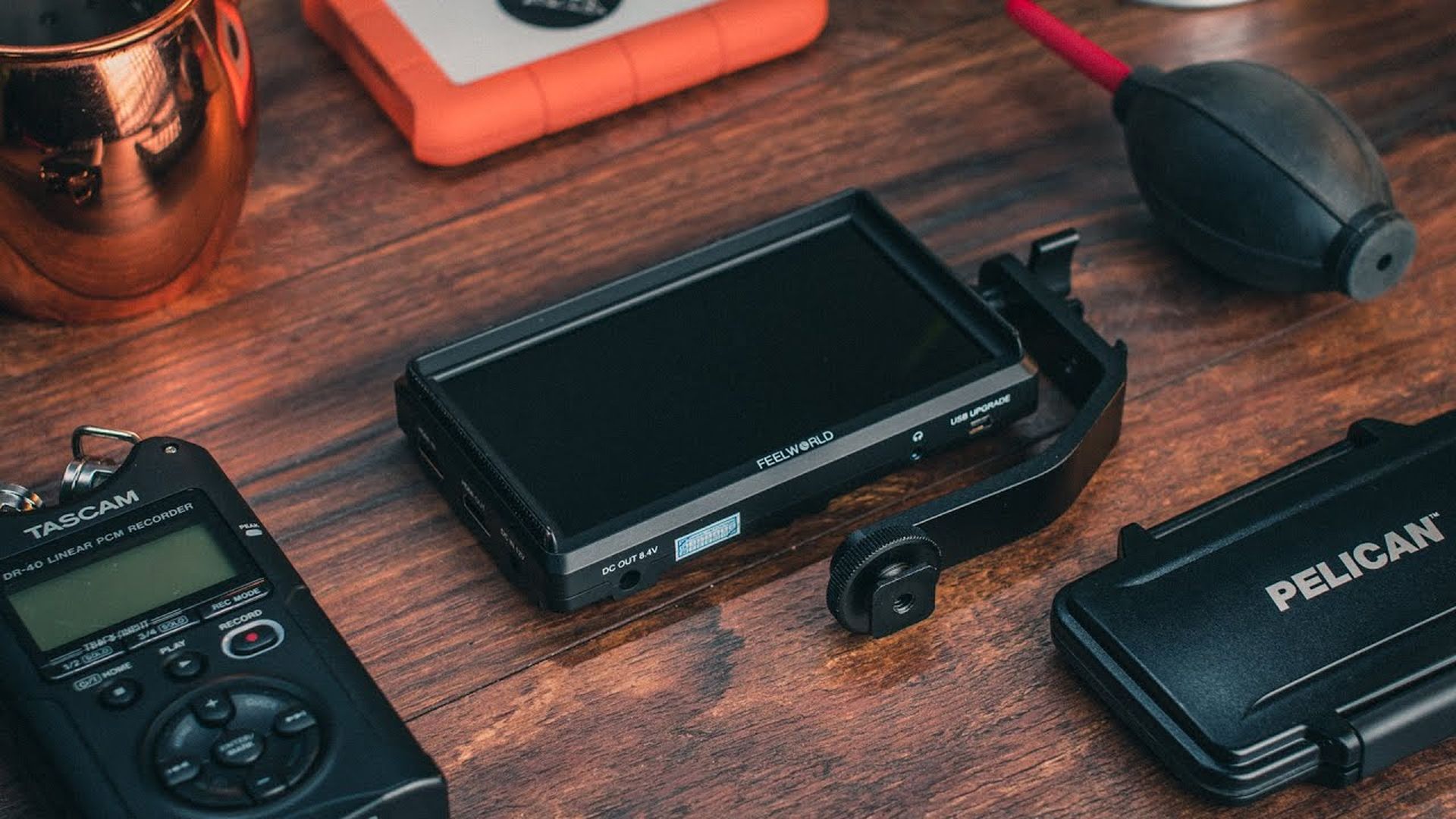
With the Feelworld FW568 external camera screen, amateur filmmakers can improve their videography skills without having to spend a lot of money. It offers many of the essential functions of high-end field monitors.
It has a 5.5-inch screen with a 1920 x 1080 high quality, is compatible with a variety of DSLR cameras, has three rapid keys for speedy operation, and is small and light enough to carry about.
Waveform and 3D LUT are accessible via the USB interface support, along with additional helpful features like brightness histogram, peak focus assist, zebra exposure, and fake colors. The variety of tools offered is excellent.
Even though the Feelworld FW568 lacks a touch screen, it is a minor inconvenience given the cost, and the flexible mounting makes it simple to put up on cameras and gimbals.
The Feelworld FW568 monitor, which has over 1,000 5-star reviews on Amazon, is unquestionably the greatest cheap external camera screen you can buy. It’s ideal for aspiring amateurs who want to broaden their videography horizons without going over budget.
Liliput A7s
Pros
- Fantastic value for the money
- The 7-inch screen is excellent for ordinary use
- There are a lot of useful auxiliary features.
- Rapid startup
Cons
- It has a poor internal speaker
- Quick power consumption
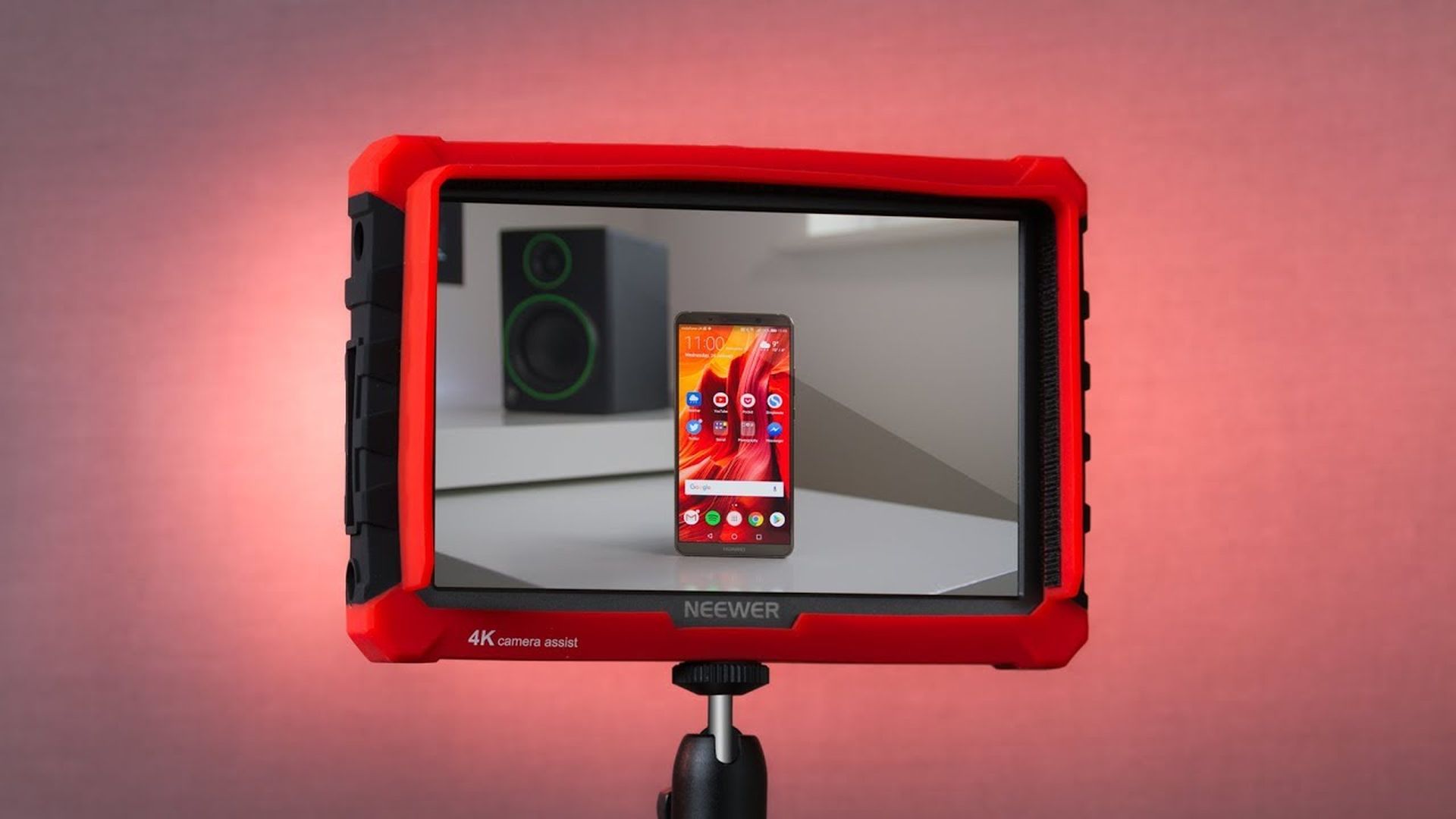
The Liliput A7S, which has a larger screen than the Feelworld FW568, measuring 7 inches, and displays photos in Full HD 1920 x 1200, is another great inexpensive external camera screen for amateur hobbyists.
The screen has a 500 nit brightness rating and an HDMI 1.4 connector that supports 4K UHD 30 FPS. It also has a loop-through capability that enables you to output the signal to additional compatible devices.
The real HD 1080p image is outstanding, with little to no ghosting when rotating the camera, and it successfully adapts to 4K while keeping a respectable level of image accuracy.
There are several helpful capabilities here for beginners to work with, such as false color, pixel zoom, peaking, and focus assistance, even though it lacks the full customisation tools of more expensive field monitors.
Don’t let the Liliput A7S’ low price fool you; as entry-level external camera monitors go, this one offers great value for the money and has enough features and tools to provide a versatile operating environment for DSLR video shooting.
SmallHD Indie
Pros
- Great picture quality
- Offers customizable software
- RED DSMC2 and KOMODO cameras offer more camera control.
- Ideal for people who want to pursue a career in medicine.
Cons
- Possibly too complex for beginners.
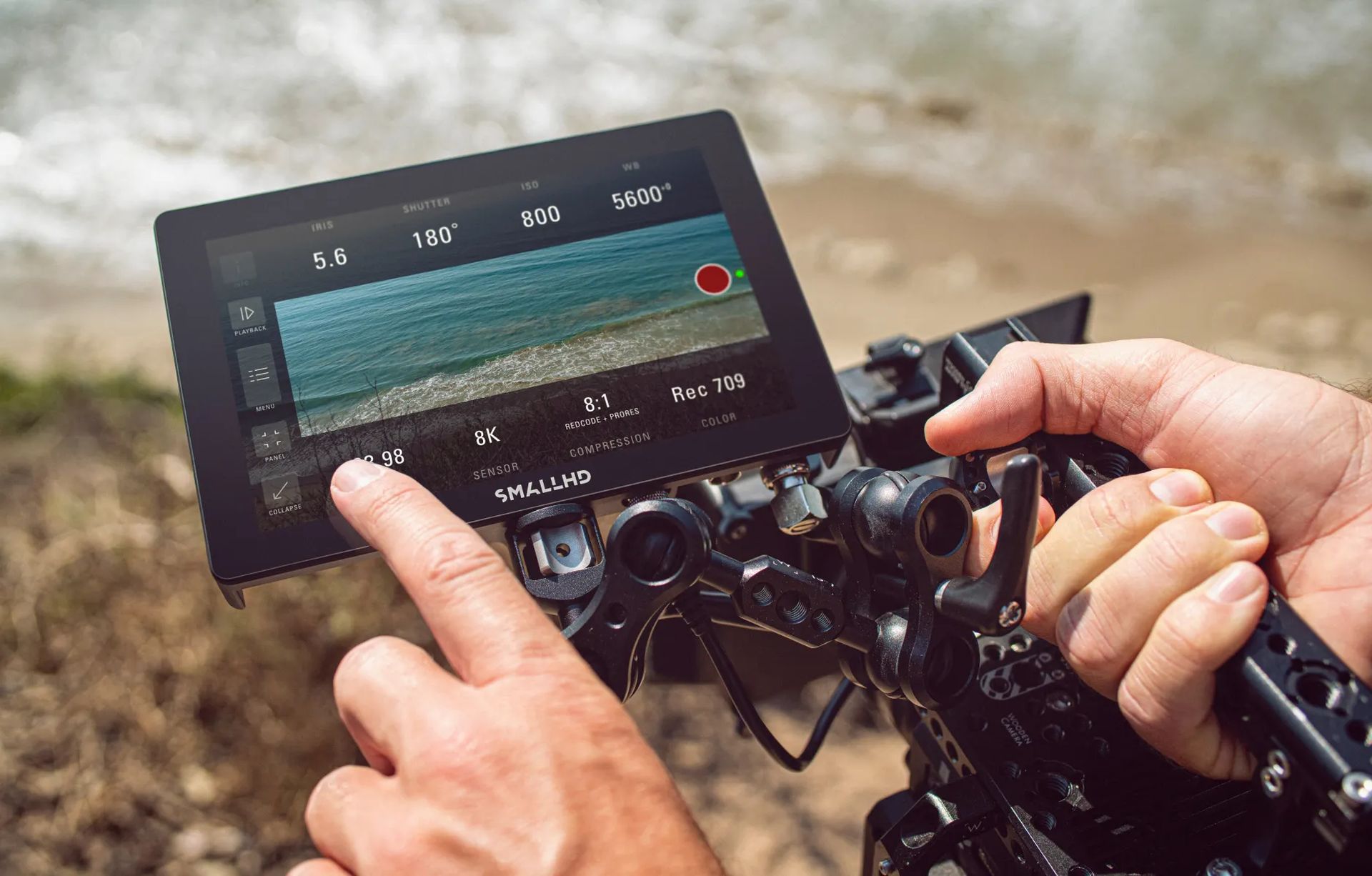
The SmallHD Indie external camera screen, which combines a variety of integrated imaging help tools with a clear full HD IPS LCD touch screen and a superb workflow, is designed for more seasoned videographers.
Whether you’re using the 3D LUT overlays, working with focus help and exposure assist, or making the most of the Teradek RT overlays, the monitor’s PageOS 4 software toolset assures quick and accurate performance.
The SmallHD Indie monitor’s software, which is frequently used by independent filmmakers and cinematographers, can assist you in achieving professional-level color grading on the go while capturing eye-catching footage that will highlight the greatest features of your selected camera.
It features 10-bit color processing in 100% Rec 709 and is fully compatible with 4K and HDR. The 1000 nits of brightness will keep the monitor image visible in most lighting circumstances.
The SmallHD Indie features software upgrades that enable you to access the internal configuration settings of RED DSMC2 & KOMODO cameras if you’re seeking for an on-camera monitor that enables you to use the touch screen in a central command hub.
Although the SmallHD Indie external camera screen is on the expensive and high-end end of the spectrum, it’s a great option for semi-professional and professional filmmakers who use professional cameras and need a seamless workflow and exceptional image quality.
How to choose an external camera screen?
Before making a purchase of an external camera screen, you should take into account a number of crucial things. Which are:
- A system that works with your camera
- Screen size and resolution
- Brightness
- LUTs, HDR, and waveforms
- Monitor/recorder combinations
- Let’s examine each of these factors in greater depth.
A system that works with your camera
Make sure the external display is compatible with the video camera you’re using before deciding which one is best for you.
Simply put, you won’t be able to use an external monitor if your camera can’t output video.
You must check the specifications to see which ports you may use with your camera if it can output video.
The most used connectors are SDI and HDMI, though an adapter can also be used to make other proprietary connections.
To ensure that the image on the external camera display is an accurate reflection of the topic you are filming, make sure the connector you select can output footage from your camera at the best possible resolution and frame rate.
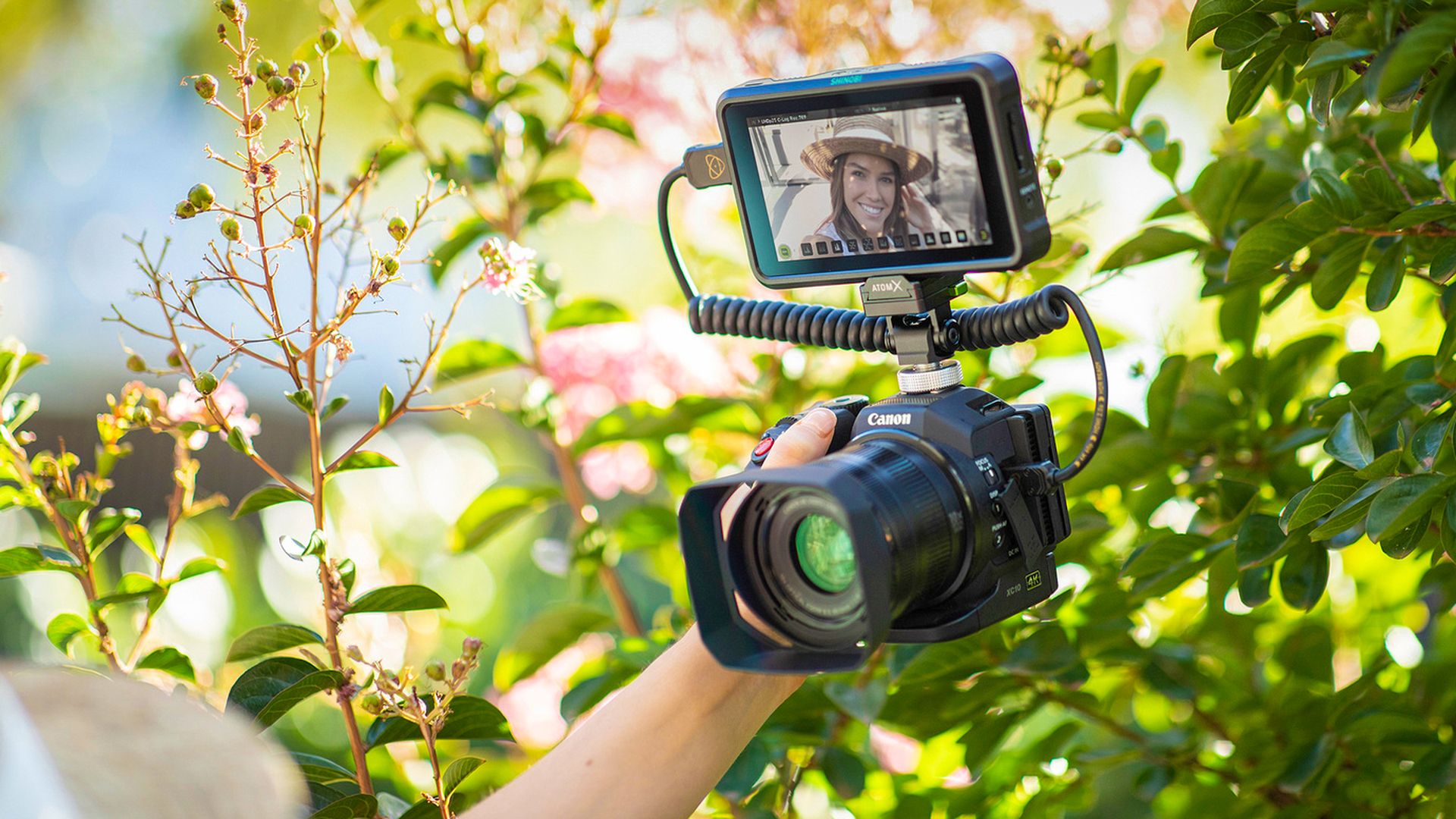
Screen size and resolution
There are many resolutions for external camera screens; the greater the resolution, the sharper and more detailed the image.
You must first verify that the monitor can handle the resolution output of your camera before selecting the best external camera screen for your requirements.
In order to properly check the focus when shooting in 4K resolution, you’ll need to use a monitor that can properly downscale to full HD and support 100% zoom.
You can get away with a lower resolution if you choose one of the smaller on-camera monitors since the denser pixels provide the appearance of a sharper image.
Selecting one that outputs images in full HD is preferred for larger screens, such as those in the 5′′ to 9′′ range.
LUTs, HDR, and waveforms
Some of the top on-camera monitors provide a variety of more sophisticated monitoring options to assist you in producing photographs that are truly professional.
The image signal may be seen and the exposure and focus can be adjusted with the help of a waveform monitor, which is frequently used on professional cameras to aid with calibration.
Additionally, it’s a helpful tool for color correction, image calibration, and evaluating the color gamut.
You might need to spend money on an HDR-compatible camera display if your camera records in the high dynamic range (HDR) format due to the growing uptake of HDR cameras and gadgets.
Although it’s not necessary, HDR-capable monitors will give a more brilliant image. However, keep in mind that this function may drastically boost the monitor’s price.
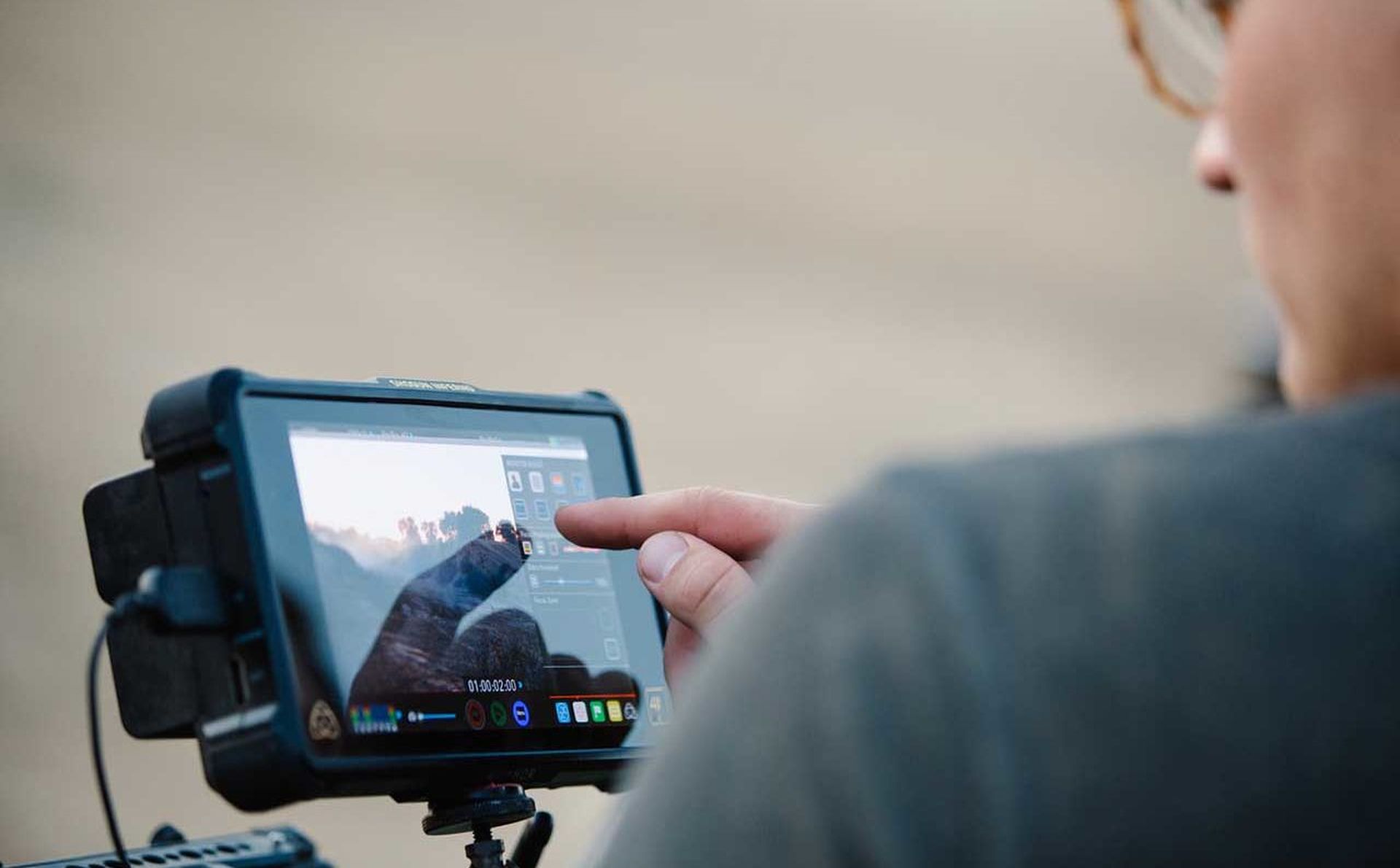
Finally, the most crucial of the sophisticated monitoring tools we’re presenting here are camera monitors with LUTs (Look-Up Tables), which enable the operator to observe images in a variety of tonal grades and transitions.
Most external screens feature standard log profiles by default, while higher-end versions let users upload their own LUTs and toggle them on and off while shooting.
As a result, you have some flexibility to ensure that the photographs are roughly how you want them to turn out in post-production by checking exposure and color as you go.
Brightness
It is obvious what the brightness level of external monitors means: it refers to how bright you can make the image.
The lighting conditions you intend to film in are crucial to take into account when determining the brightness of an on-camera monitor, especially if you want to capture footage outside in direct sunlight.
In these situations, having the option to increase brightness makes it simpler to see the graphics on the monitor in direct sunshine.
With up to 1000 cd/m2 (nit) of brightness, some monitors are advertised as “daylight viewable,” guaranteeing clear image reproduction even when using the camera monitor in direct sunlight.
Purchasing a monitor hood is a less expensive option, albeit they may not be as effective on days that are very bright and sunny.
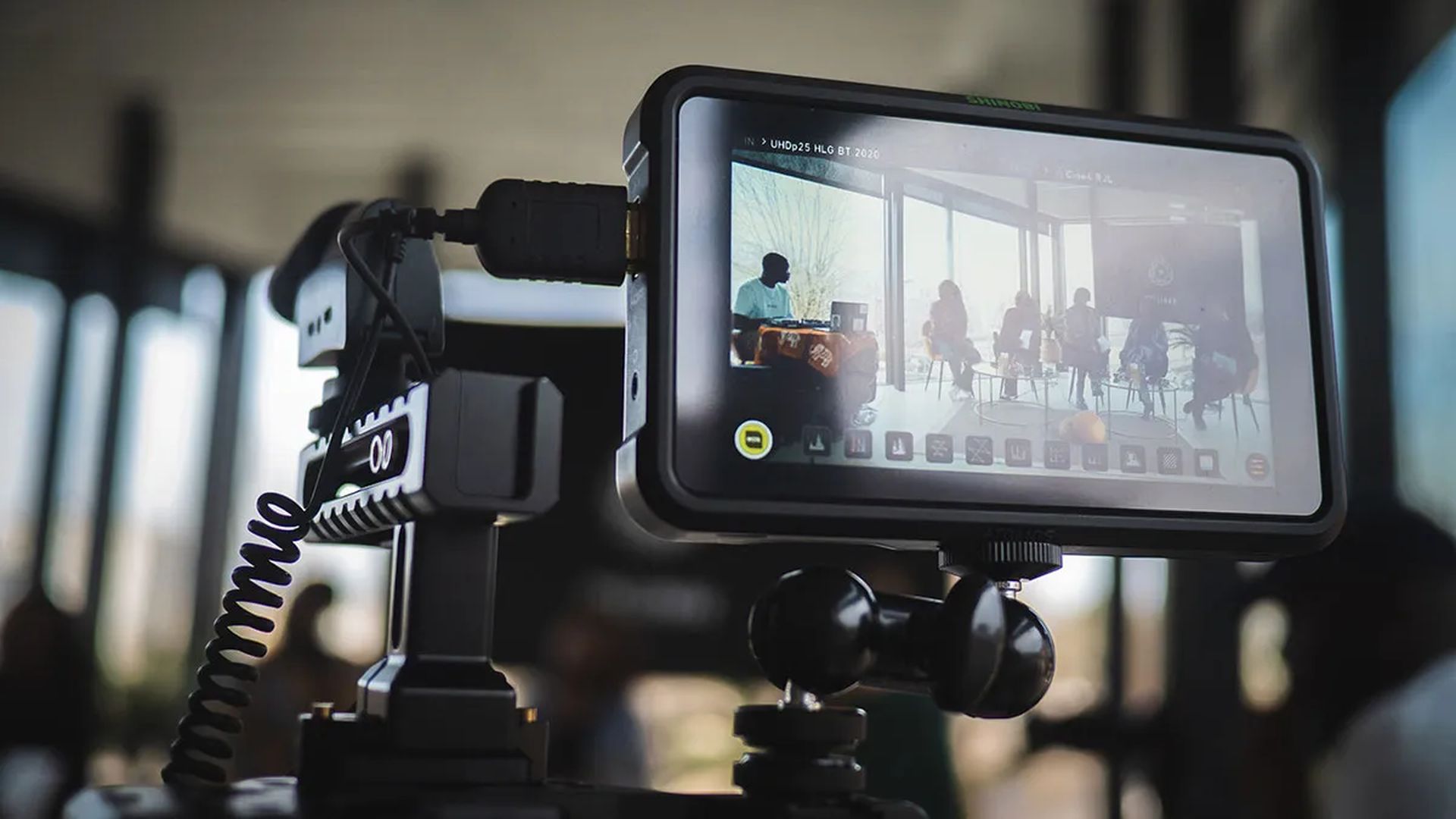
Monitor and recorder combinations
You can record video to storage outside of the camera using some external camera monitors that have built-in recording capabilities.
This not only helps you conserve the camera’s internal storage capacity, whether you’re utilizing SDI or HDMI output, but it also gets around the camera’s processing power and enables you to save uncompressed film at larger bit depths.
This feature is also important to take into account if your camera can produce raw outputs, such as ProRes RAW, which need a suitable camera monitor.
Keep in mind that raw video output may need additional firmware, so make sure you check your camera’s specifications to make sure it is compatible.
How to use a phone as an external camera screen?
If you’re not sure which external camera screen to choose, you can connect your camera to your Android phone and use it to view and record the footage you receive in the same way.
To use your phone as an external camera screen:
- Connect your phone to the camera. For instance, a Micro HDMI to HDMI cable, an HDMI to USB capture card, and a USB-A to USB-C connection can all be used to do this.
- Attach the phone to the hotshoe of the camera. You’ll need a phone tripod mount and a camera hotshoe with a tripod screw adapter compatible with your phone for this.
- Download and install the USB camera pro program. A free version of the software, which supports a variety of video formats including 4K H.264 video recording, is available from the Google Play Store.
Although you can’t shoot 10-bit video with this setup and older phones could skip frames occasionally, it’s a good solution for individuals who can’t afford an external camera screen.
Conclusion
The finest external camera screens enable videographers to break free from the limitations of their camera and produce more dynamic, expressive, and fluid video.
There is a monitor to suit every budget and need, whether you’re a novice enthusiast just beginning your videography journey or an experienced pro looking to upgrade your field monitor to something compatible with the newest technology.
Before you leave, don’t forget to check out our guide explaining how to get a vintage look to your photos with Photoshop.

